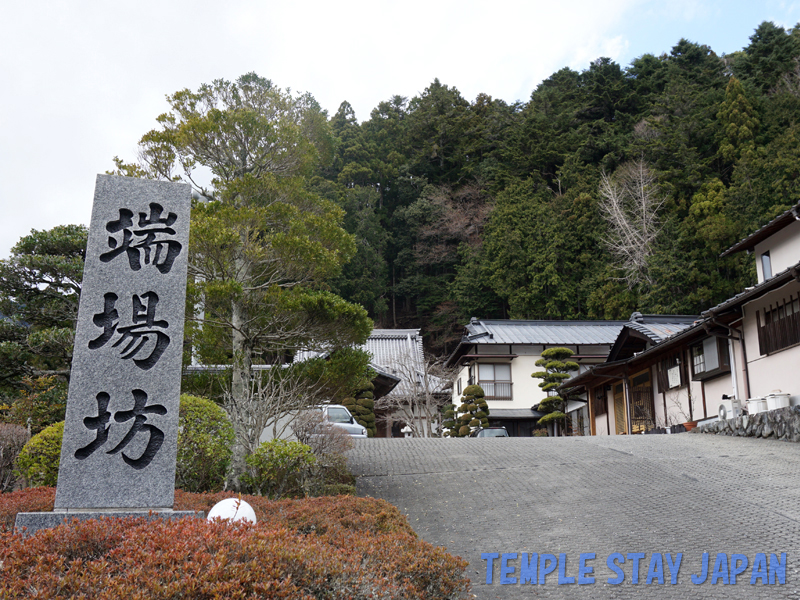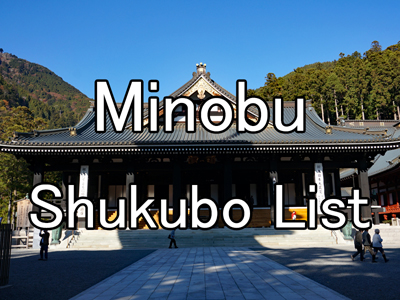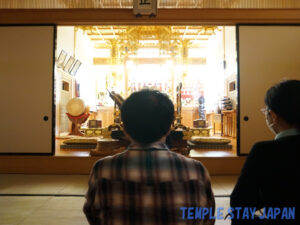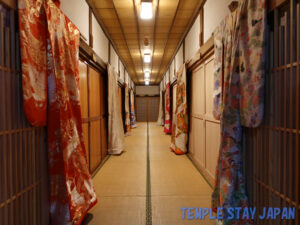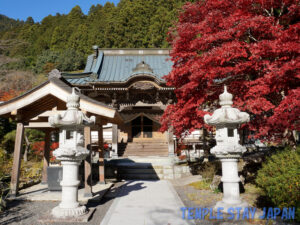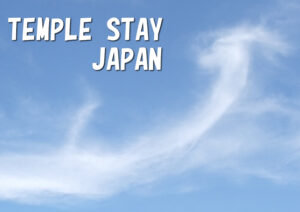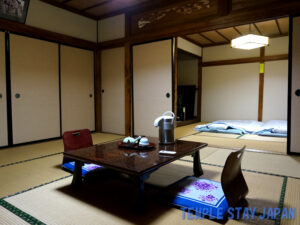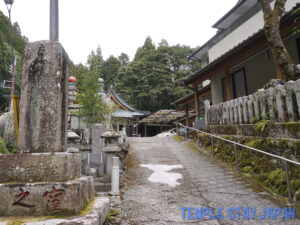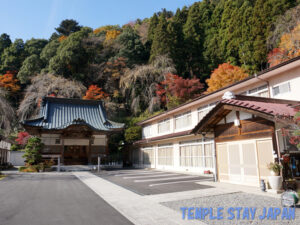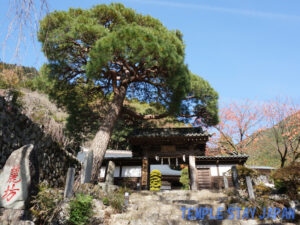Introduction to Habanobo Temple
Habanobo is located in the town around the Kuonji Temple. This temple was founded by Shijo Kingo (1229-1296), who served as Nichiren’s personal physician. It’s on a hilltop with a great view and a very quiet environment.
The room I stayed in was a combination of two 10 tatami mat rooms. There were hanging scrolls and pottery on the tokonoma alcove, making it a very tasteful Japanese-style room. Towels, bath towels and yukata robes are provided.
Shukubo (temple stay)
Habanobo places more emphasis on prayer and training than other shukubo on Minobu-san. There are no televisions in the rooms and no alcohol.
I performed a water purification ritual under the guidance of the head priest. Men wear loincloths and women wear white robes. While chanting sutras, water is poured over the body vigorously and repeatedly. It was a cold time at the end of November, but it invigorated my body and mind.
Afterwards, we held a service in the main hall. The head priest chanted sutras and prayers were made for the repose of ancestors, safety of the family, good health, and world peace.
Buddhist vegetarian cuisine
Dinner is buddhist vegetarian cuisine. First, we recited words of thanks for the meal together with the head priest.
And then we have our meal. The fresh yuba skin, a specialty of Minobu-san, is delicious. It was served with wasabi soy sauce and had a thick texture. The sesame tofu is served with red miso and wasabi. The glaze-grilled gluten has a rich flavor.
After the meal, we also join our hands together and say “thank you for the meal” to show our gratitude. The vegetarian cuisine was not only visually stunning and delicious, but eating it carefully also warmed my heart.
Early morning visit to Kuonji Temple
At Kuonji Temple, the head temple of the Nichiren sect, services are held in the main hall early in the morning (5:30 from April to September, 6:00 from October to March). The head priest of Habanobo came with me to Kuonji Temple and showed me around each place.
The first thing I was explained was bell striking. It is a powerful sight to see the monk fall backwards to gain momentum and then use the momentum to strike the bell. He said that it is something that young, athletic monks perform through repeated practice.
The loud sound echoed through the still dark temple grounds and I was moved.
Then we go up to the main hall. About 50 monks were chanting sutras, which was very impressive.
By the time the service finished, the sun had risen and the grounds of Kuonji Temple looked shining.
When we return to the Habanobo, breakfast is served. The menu was rice, miso soup, tofu, spinach dressed in sesame paste, dried radish strips, pickled plums, pickled radish, kelp, and nori seaweed.
I had many opportunities to talk with the chief priest over the two days, and it was a very enjoyable trip.
